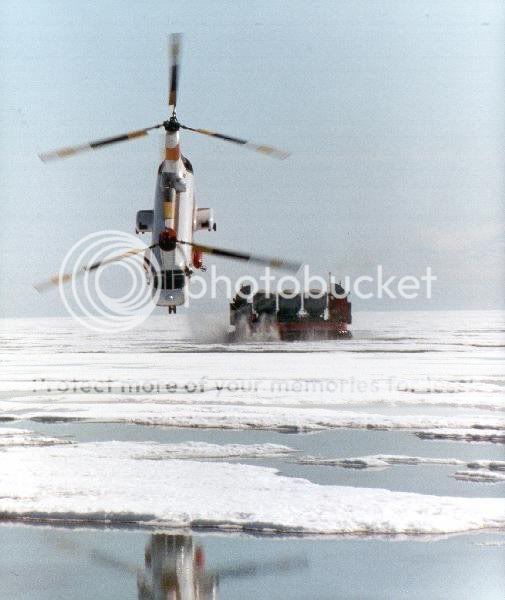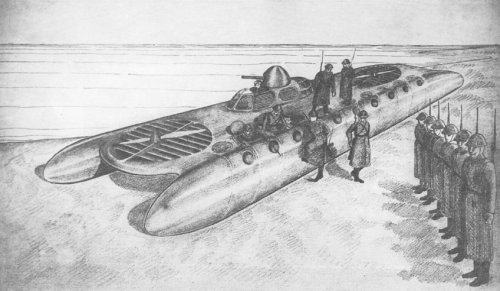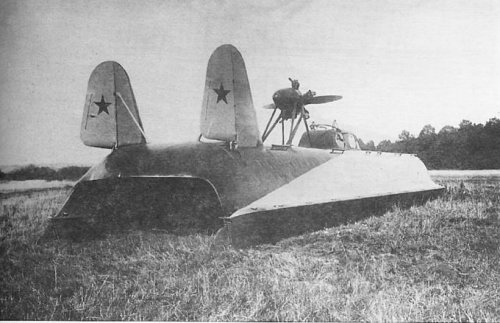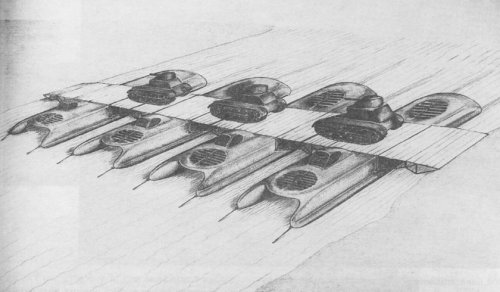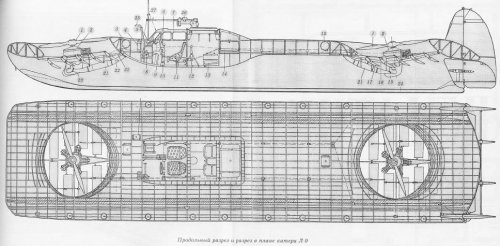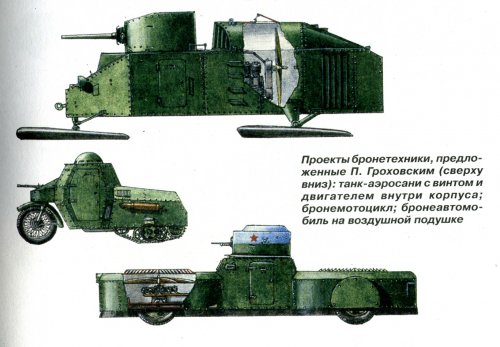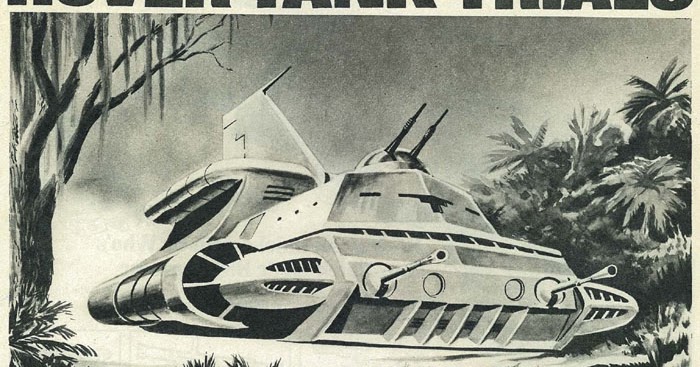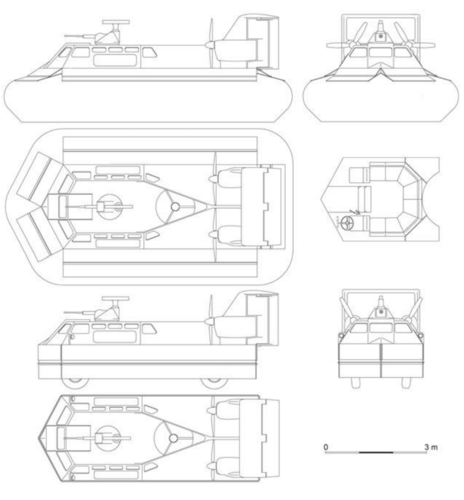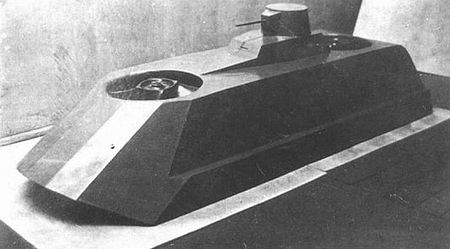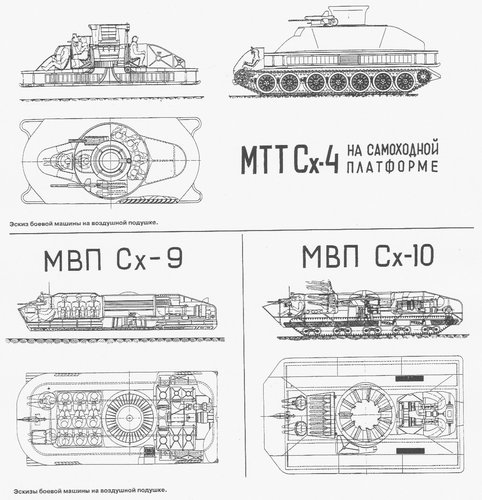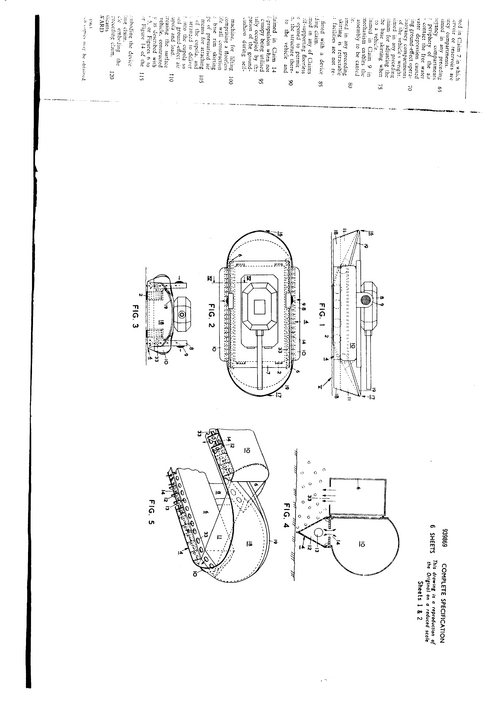The vehicle's streamlined hull had U-shaped cross-section, following the L-1 boat's layout, and was to be welded from 10...13 mm steel armor plates, with sloping bow and stern.
Two M-25 aircraft engines, producing 1450 hp altogether, propelled two airscrews, which were mounted inside vertical tunnels at bow and stern parts of the hull. The design documentation stipulated that the vehicle, weighting 8,5 ton, would hover at 200–250 mm above water or ground surface and travel at 120 km/h. Cornering was achieved by means of louvers, which regulated the flow of air.
The tank was designed for a two-person crew: the driver who sat behind the forward propeller and the commander/gunner who manned the cylindrical rotating turret. The vehicle's armament consisted of one 7,62 mm (.30 Cal) Degtyarev tank machine gun.

